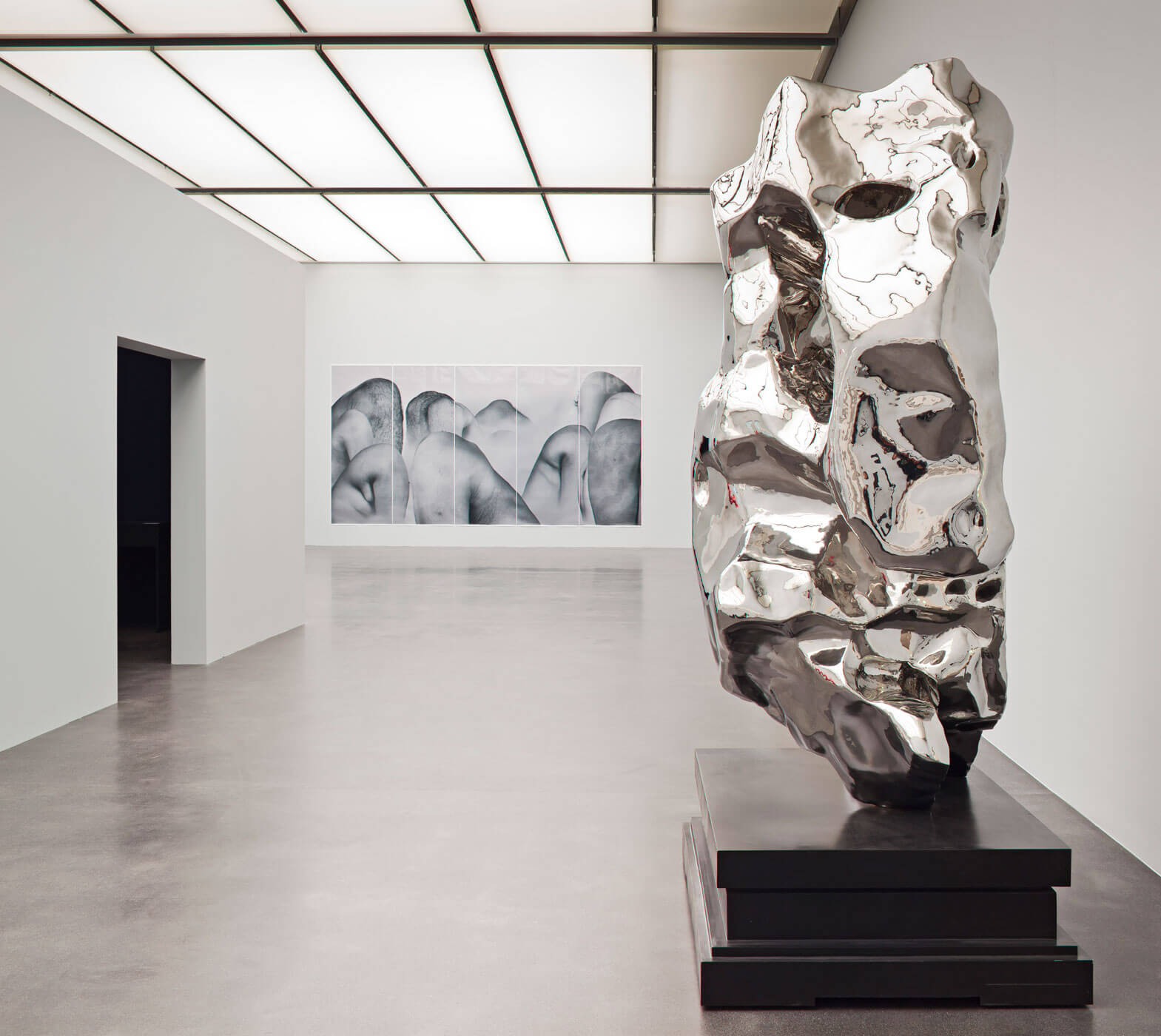Shanshui. Poesie ohne Worte?
Landschaft in der chinesischen Gegenwartskunst
with AI WEIWEI, CHEN GUANGHUI, CHEN HUANG (17. JH.), CHEN KE, DAI GUANGYU, DONG QICHANG (1555–1636), DUAN JIANYU, FENG MENGBO, FU BAOSHI (1905–1965), GU WENDA, GUO XI (NACH GUO XI, 1020–1090), HE XIANGYU, HONG LEI, HU LIU, HUANG SHEN (1687–1772), HUANG YAN, JI DACHUN, JIANG ZHI, JIN JIANGBO, LI KERAN (1907–1989), LI XI, LIU WEI, LIU WEI, MI WANZHONG (1570–1628), NI YOUYU, PENG WEI, QIU ANXIONG, SHANG YANG, SHAO WENHUAN, SHEN ZHOU (15. JH.), SHI GUORUI, WANG HUI (1632–1717), WANG YIN, WEN ZHENGMING (1470–1559), WU GAOZHONG, XU BING, XU XIAOGUO, YAN LEI, YANG YONGLIANG, YAO SONG (1648–1721), YUAN XIAOFANG, ZHAN WANG, ZHANG JIANJUN, ZHANG XIAOTAO, ZHAO MENGFU (ZUGESCHR. 1254–1322), ZHENG GUOGU and ZHOU TIEHAI
In China, shanshui has been developing as a form of artistic expression for more than 1’500 years. This painterly form, which literally translated means “mountain-water-painting,” is part of humanity’s cultural heritage. As the joint Swiss-Chinese project delved into the topic, and especially into the question of shanshui’s continued relevance for a contemporary context, it encountered a highly complex field of research.
At one pole of this significantly joint venture stands Uli Sigg, he is the Swiss expert on China, to this day, Sigg has built up the most extensive collection of Chinese contemporary art in the world. Ai Weiwei stands at the other pole. The Chinese conceptual artist, architect and activist has long been a mentor to the present day Chinese art scene. These two border walkers come together in the Museum of Art Lucerne, which, situated on the Lake Lucerne shoreline, is an ideal location to reflect on landscape in the sense of shanshui, as an expression of the soul.
The exhibition Shanshui looks at the relationship Chinese contemporary art has shaped to its own tradition through the lens of the landscape painting. The initially apparent idyll quickly disperses in light to its own history and culture since the first World War. The volatility of this idyllic motif quickly becomes evident as a burning issue of great importance even today.
curated by Ai Weiwei, Peter Fischer and Uli Sigg




